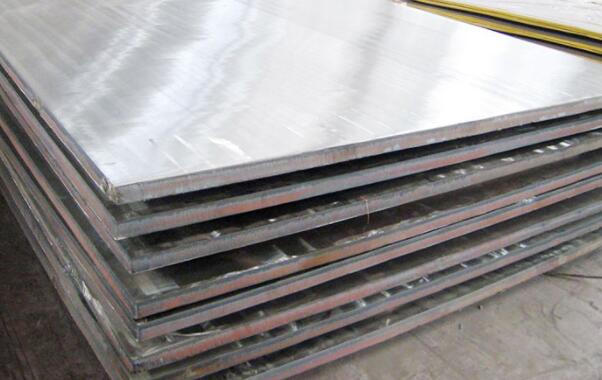A clad plate is a combination of two or more different metals, each chosen for its specific properties, metallurgically bonded to obtain an integral continuous single plate offering the benefits of both components. Generally, clad plates are produced by bond-rolling.
By combining for example a stainless steel with low alloy backer steel, it is possible to benefit from the mechanical properties of the backing material and the corrosion resistance of the stainless steel at a competitive price. Normally the backer metal is carbon-manganese steel, CrMo or other low alloy material and the cladding can be a stainless steel or a nickel base material.
Therefore, clad steel plate not only has sufficient strength required of structural materials (base metal) but provides other functions including resistance to heat and corrosion (cladding material) and is still lower in cost than similar products made entirely of the cladding material.
Consequently, clad steel plate is used in a variety of industrial fields including shipbuilding, construction and manufacturing of various tanks.
A thin layer of expensive corrosion-resistant alloy provides excellent corrosion protection while the thicker but less expensive base-material of high-strength carbon steel ensures adequate structural strength. A metallurgical bond between the two materials is achieved in a computer-controlled hot-rolling process. Roll-bonded clad plates are the economic solution for corrosion resistant applications in refineries, oil and gas production, chemical industry as well as in sea-water desalination plants and flue-gas desulphurization units.

Stainless Steel Clad Plate (Hot Rolled)
The following standards are applicable as a rule.
● ASTM A263-“Standard Specification for Stainless Chromium Steel-Clad Plate”
● ASME SA-263-“SPECIFICATION FOR STAINLESS CHROMIUM STEEL-CLAD PLATE”
● ASTM A264-“Specification for Stainless Chromium-Nickel Steel-Clad Plate”
● ASME SA-264-“SPECIFICATION FOR STAINLESS CHROMIUM-NICKEL STEELCLAD PLATE”
ASTM Â / ASME
● Pressure vessel use carbon steel plate A516, A285, SA-516, SA-285, etc.
● Pressure vessel use low-alloy steel plate A387, SA-387, P235GH etc
● Structural carbon steel plate A36, A283, S235JR, S235JR, P355 NH, P355 NH1 etc
Other standards in available steel plates, such as, BS, JIS, ASTM,
ASME, various ship classification society standards are also applicable.
ASTM / ASME
● Stainless Steel Spec: ASTM A240 : 304L, 316L, 317L, 321, 347, 405S, 410S, 430, 904L, 2205, AI6XN
● Nickel Alloy Spec : B162 : Nickel 200, Nickel 201
● Nickel Alloy Spec : B127 , B424, B443: Alloy 400, C276, Alloy  600/625/825/686, +C22, +Carpenter, 20
● Titanium Alloys: Grade 1, Grade 2, Grade 7, Grade 11
Other standards in available steel plates, such as, BS, JIS, ASTM,
ASME, various ship classification society standards are also applicable.
| Cladding material | Ferritic and austenitic stainless steel | Copper, nickel alloys | Titanium |
| Total thickness | 6-150 mm | 6-70 mm | 10-40 mm |
| Cladding thickness | 1.5-12 mm | 1.5-10 mm | 1.5-7 mm |
| Width | 3,800 mm max. | 3,800 mm max. | 3.200 mm max. |
| Length | 15,000 max. (12,000 mm Q+T max.) | 15,000 max. (12,000 mm Q+T max.) | 12,000 mm max. |
| Unit weight | 2-17 tons | 2-9 tons | 5 tons max. |
| Surface area | 60 m² min. | 60 m² min. |